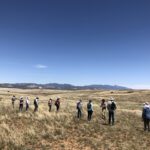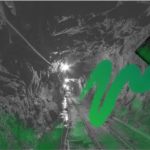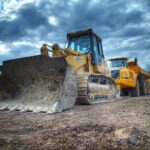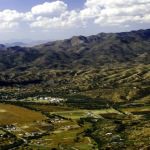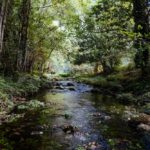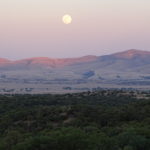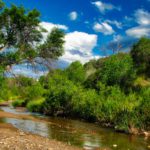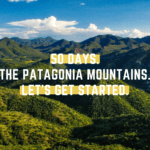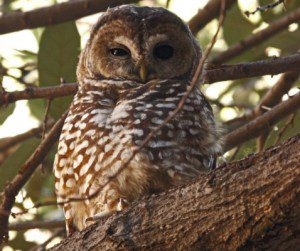
Oct 29, 2014 | Blog
FOR IMMEDIATE RELEASE
October 29, 2014
Contact: Courtney Sexton, csexton@defenders.org, 202-772-0253
Wendy Russell, wendy@patagoniaalliance.org, 520-477-2308
Groups file complaint against Forest Service and Fish and Wildlife Service for approval of mineral drilling project in Arizona’s Coronado National Forest
TUCSON, ARIZ. – Defenders of Wildlife and the Patagonia Area Resource Alliance today asked a federal court to hold the United States Forest Service and United States Fish and Wildlife Service accountable for their unlawful approval of the “Sunnyside” mineral exploration drilling project in southern Arizona’s Coronado National Forest, in the Alum Gulch area of the Patagonia Mountains. The groups say the approval of the Canadian mining company Regal Resources’ Sunnyside Project violates environmental laws and poses a potential threat to endangered species and the safety of drinking water for local residents. The Sunnyside Project involves drilling multiple exploratory holes up to 6,500 feet deep in one of the most biologically diverse mountain ranges in Arizona. The extensive drilling and construction would run 24/7 for months on end, and the total project operations could last up to 3 years.

Mexican spotted owl, ©Gooch Goodwin
The Coronado National Forest, the Patagonia Mountains and the watersheds in this region support some of the world’s most imperiled wildlife, including the jaguar, ocelot, lesser long-nosed bat, Mexican spotted owl, and yellow-billed cuckoo. Of particular concern is the Mexican spotted owl “Protected Activity Center” (PAC) in the Alum Gulch area, a site which is supposed to have the greatest protection of the law. One of the project’s proposed drilling sites is only one-tenth of a mile from the “nesting core area” of this PAC.
“The potential damage from the Sunnyside Project, especially coupled with other damaging mining projects in the region, could have devastating impacts on this imperiled wildlife and the habitat they depend on, as well as the water supply for local residents,” said Rob Peters of Defenders of Wildlife. “This is a national forest and imperiled wildlife and their habitats on the forest should be protected— not polluted by expanded drilling operations.”

Ocelot, Leopardus pardalis. photo US FWS
Patagonia area residents are dependent on water originating from Alum Gulch, an area which is also designated as critical habitat for the jaguar and Mexican spotted owl. The imperiled ocelot, lesser long-nosed bat, and yellow-billed cuckoo have also been observed near the project area.
“The Sunnyside Project could have tremendous adverse impacts on local wildlife and local residents, affecting the floodplains and the municipal watershed of the town of Patagonia,” said Wendy Russell of the Patagonia Area Resource Alliance. “The drilling will require 12,500 gallons of water per day, an amount approximately equal to ten percent of the daily water usage of the Town of Patagonia. This project threatens not only endangered wildlife, but our community’s water, health and safety.”
Click to hear from environmental attorneys on why they sue.
###
Defenders of Wildlife is dedicated to the protection of all native animals and plants in their natural communities. With more than 1.1 million members and activists, Defenders of Wildlife is a leading advocate for innovative solutions to safeguard our wildlife heritage for generations to come. For more information, visit www.defenders.org and follow us on Twitter @DefendersNews.
The Patagonia Area Resource Alliance is a citizen watchdog organization that monitors the activities of mining companies, as well as ensures government agencies’ due diligence, to make sure their actions have long-term, sustainable benefits to our public lands, our water, and the town of Patagonia. For more information visit www.patagoniaalliance.org and follow us on Twitter @PARAalliance.
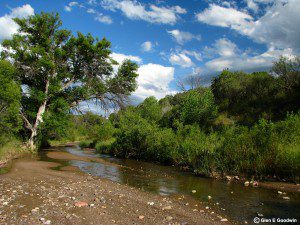
Oct 28, 2014 | Blog
Peer-reviewed report outlines Hermosa mine’s risks of water consumption, perpetual water pollution to Patagonia area
Patagonia Area Resource Alliance
Earthworks
October 28, 2014
 Patagonia – The Hermosa silver mine proposed inside Patagonia, Arizona’s Municipal Supply Watershed could deplete the town’s drinking water and perpetually contaminate area groundwater with acid mine drainage, according to a new peer-reviewed report.
Patagonia – The Hermosa silver mine proposed inside Patagonia, Arizona’s Municipal Supply Watershed could deplete the town’s drinking water and perpetually contaminate area groundwater with acid mine drainage, according to a new peer-reviewed report.
Reviewed* by a USGS scientist and released by the Patagonia Area Resource Alliance and Earthworks, the study also concludes that drinking water wells of surrounding residents are also threatened.
“A mine that threatens our town’s drinking water is a mine that shouldn’t be built,” said Wendy Russell of the Patagonia Area Resource Alliance. She continued, “In Arizona, water is more precious than silver, and especially so after more than a decade of drought.”
Proposed by Canadian exploration company AZ Mining Inc (Wildcat Silver) – a company with no experience operating a mine – Hermosa is proposed at a time when Patagonia is already concerned with dropping groundwater levels and increasing concern about future water supplies.
The 4,000 foot wide and 1,500 foot deep Hermosa silver and manganese mine would consume 670 million to 1.2 billion 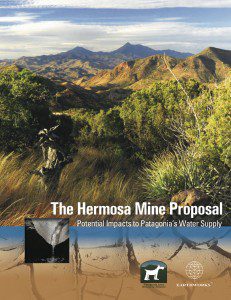 gallons of groundwater per year – up to 53 times the amount of water the town uses today — to run the mine within the upper reaches of Harshaw Creek, a portion of Patagonia’s Municipal Supply Watershed. This water consumption will lower the recharge rates for the aquifer on which the town depends, and is also likely to produce acidic runoff, requiring ongoing treatment in perpetuity.
gallons of groundwater per year – up to 53 times the amount of water the town uses today — to run the mine within the upper reaches of Harshaw Creek, a portion of Patagonia’s Municipal Supply Watershed. This water consumption will lower the recharge rates for the aquifer on which the town depends, and is also likely to produce acidic runoff, requiring ongoing treatment in perpetuity.
“If the U.S. Forest Service were to permit the Hermosa mine, this report shows it would jeopardize our community’s drinking water. And for what? For foreign shareholders’ silver,” said Wendy Russell. She continued, “This is a mine proposal that just doesn’t make sense for our community who would actually have to live with it.”
The mine is proposed within the Coronado National Forest, and therefore subject to the 1872 Mining Law. Federal land managers interpret the 1872 Mining Law to require them to permit mines, no matter if the land is better used for other purposes – like protecting a town’s drinking water supply watershed.
“Because the Hermosa mine proposal threatens area water supplies, it obviously should not be permitted,” said report author Pete Dronkers of Earthworks. He continued, “That it’s being considered at all is a strong argument for reforming the 1872 Mining Law to allow the consideration of other potential land uses.”
The report also evaluates the nature of groundwater depletion that is likely under the proposed mine plan, characterizes the impacts of such, and also analyses other known adverse impacts, such as air pollution, endangered species, and other cumulative impacts.
The report, including an executive summary, can be found at: patagoniaalliance.org/report-hermosa-mine
For more information:
Fact Sheet
Full Report
Contact:
Pete Dronkers, Earthworks
(775) 815-9936, pdronkers@earthworksaction.org
Wendy Russell, Patagonia Area Resource Alliance
(520) 477-2308, wendy@patagoniaalliance.org
* An earlier version of this press release indicated that a USGS scientist “endorsed” this report. We were informed by the United States Geological Survey that the agency only endorses their own reports and documents.
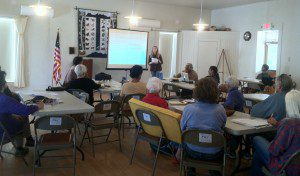
Mar 27, 2014 | Blog
PARA, Jenny Neeley and Sergio Avila from Sky Island Alliance teamed up again to host a NEPA comment workshop at Cady Hall in Patagonia on March 26, 2014. Discussed were the potential issues of the Forest Service’s Draft Environmental Assessment of the AZ Mining Inc / Wildcat Silver / Arizona Minerals Hermosa mining exploration proposal and how to comment effectively on it.
 Jenny Neeley reprised her role as our National Environmental Policy Act (NEPA) expert for tips on filing public comments on the Hermosa draft Environmental Assessment (EA) released by the Coronado National Forest. The purpose of an Environmental Assessment is to determine whether the impacts of a project will be significant. The goal for our comments on the draft EA is to demonstrate that the Hermosa project impacts will be significant so that the Forest Service conducts a more detailed and comprehensive Environmental Impact Statement. Read more tips for writing comments here.
Jenny Neeley reprised her role as our National Environmental Policy Act (NEPA) expert for tips on filing public comments on the Hermosa draft Environmental Assessment (EA) released by the Coronado National Forest. The purpose of an Environmental Assessment is to determine whether the impacts of a project will be significant. The goal for our comments on the draft EA is to demonstrate that the Hermosa project impacts will be significant so that the Forest Service conducts a more detailed and comprehensive Environmental Impact Statement. Read more tips for writing comments here.
PARA board member Cliff Hirsch gave a summary of the expected activities proposed by the AZ Mining Inc / Wildcat Silver / Arizona Minerals Hermosa exploratory drilling project located 6 miles southeast of the Town of Patagonia. The project activities encompasses 7350 acres of both Coronado National Forest and private land. It is also expected to use 3,525,800 gallons of groundwater pumped from within the Town of Patagonia Municipal Supply Watershed. Click here for talking points and Hermosa project summary.
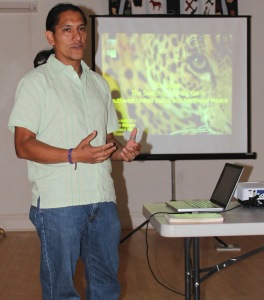
SIA Biologist, Sergio Avila
SIA biologist Sergio Avila discussed the amazing biodiversity found in the Patagonia Mountains during the Bioblitz event conducted in April 2013. View the Bioblitz report here. The results from the Bioblitz and the ongoing wildlife tracking in the Patagonia Mountains demonstrate the importance of the Patagonias as a wildlife corridor and biological hotspot in the sky island mountain ranges of southern Arizona and northern Mexico. Click for a list of Federally Threatened, Endangered and Sensitive Species in the Patagonia Mountains of the Coronado National Forest in southern Arizona.
The Hermosa draft Environmental Assessment is available at the Patagonia Public Library and online at the Forest Service website on the Hermosa project page: http://www.fs.fed.us/nepa/nepa_project_exp.php?project=41158.
Thank you everyone for your participation. The Forest Service received 200 public scoping comments on the Hermosa Plan of Operation. Let’s send them 200 more on the draft EA! Deadline to submit comments is Friday, April 11, 2014.
Additional Resources:
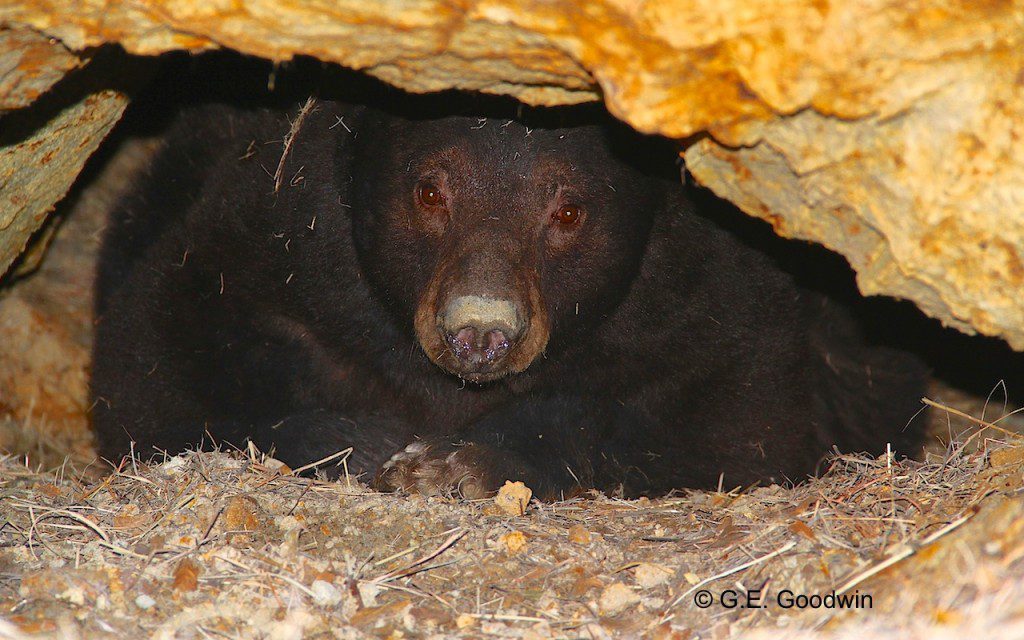
Save my home in the Patagonia Mountains. ©Gooch Goodwin
Mar 27, 2014 | Blog
Tips for Writing Comments for a Draft EA
By Jenny Neeley
1. Consider whether the effects significant. If they are, then the Forest Service must prepare a more detailed Environmental Impact Statement (EIS) rather than an Environmental Assessment (EA). When deciding whether the impacts are “significant” NEPA implementing regulations (40 CFR § 1508.27) require that agencies consider both:
- Context: The significance of an action must be analyzed in several contexts such as society as a whole, the affected region, the affected interests, and the locality. Significance varies with the setting of the proposed action. For instance, in the case of a site-specific action, significance would usually depend upon the effects in the locale rather than in the world as a whole. Both short- and long-term effects are relevant.
- Intensity: This refers to the severity of impact. …The following should be considered in evaluating intensity:
- Impacts that may be both beneficial and adverse. A significant effect may exist even if the Federal agency believes that on balance the effect will be beneficial.
- The degree to which the proposed action affects public health or safety.
- Unique characteristics of the geographic area such as proximity to historic or cultural resources, park lands, prime farmlands, wetlands, wild and scenic rivers, or ecologically critical areas.
- The degree to which the effects on the quality of the human environment are likely to be highly controversial.
- The degree to which the possible effects on the human environment are highly uncertain or involve unique or unknown risks.
- The degree to which the action may establish a precedent for future actions with significant effects or represents a decision in principle about a future consideration.
- Whether the action is related to other actions with individually insignificant but cumulatively significant impacts. Significance exists if it is reasonable to anticipate a cumulatively significant impact on the environment. Significance cannot be avoided by terming an action temporary or by breaking it down into small component parts.
- The degree to which the action may adversely affect districts, sites, highways, structures, or objects listed in or eligible for listing in the National Register of Historic Places or may cause loss or destruction of significant scientific, cultural, or historical resources.
- The degree to which the action may adversely affect an endangered or threatened species or its habitat that has been determined to be critical under the Endangered Species Act of 1973.
- Whether the action threatens a violation of Federal, State, or local law or requirements imposed for the protection of the environment.
2. Make your comments “substantive” and specific. The Forest Service is required by law to respond to all “substantive” comments submitted during the public comment period; the more specific and focused your comments are, the more detailed the response must be from the agency. Comments that simply say “I am opposed to this project” will not, by themselves, require a response from the agency.
3. Include the specific sections, pages and/or topics you are referencing in the Draft EA. To the extent you can, direct your comments to specific sections, pages or topics in the Draft EA, recognizing that some comments may be addressing missing or incomplete information, or even missing topics, that you feel should be addressed.
4. Make your letter personal! Your personal connection to the Patagonia Mountains and surrounding area is an incredibly important part of your comment letter. You should explain how will you be personally impacted if this proposal moves forward. Include information about how it will affect your home, your land, your family, and/or your business and livelihood. This is a great way to start your letter and to frame the rest of your comments, and will help get the Forest Service’s attention.
Additional Information
See our NEPA Resources page: http://www.patagoniaalliance.org/nepa-resources/
More information about Wildcat Silver at: http://www.patagoniaalliance.org/wildcat-silver/
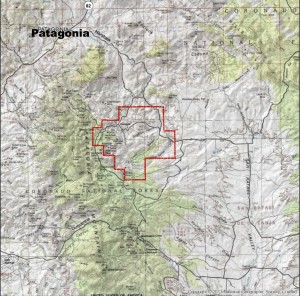
Mar 18, 2014 | Blog
The Coronado National Forest has released the draft Environmental Assessment (EA) for the AZ Mining Inc (aka Wildcat Silver, Arizona Minerals Inc) Hermosa exploratory mineral drilling project in the Patagonia Mountains.
Assist PARA in protecting our precious and imperiled natural resources such as clean water and wildlife, and actively advocate for the preservation of those resources by opposing AZ Mining Inc / Wildcat Silver’s draft EA drilling exploration plan.
- Plan to attend and ask questions at the public meeting hosted by the Coronado National Forest about AZ Mining Inc / Wildcat Silver’s draft Environmental Assessment at the Patagonia Union High School. Monday, March 24 from 6-8pm.
- Submit comments to the Forest Service about AZ Mining Inc / Wildcat Silver’s draft EA drilling plan. Want to know how? Attend PARA’s comment-writing workshop with Jenny Neeley and Sergio Avila on Wednesday, March 26, 4pm – 7pm Open House at Cady Hall.
- Sign a petition telling the Coronado National Forest that an EA is insufficient and a full Environmental Impact Statement is necessary when considering the Hermosa mineral drilling proposal. Sign Petition here.
- Advocate for the protection of our community’s drinking water, natural resources, and distinct, serene rural way-of-life by making a donation. Every single donation assists PARA in our watchdog efforts for the Patagonia area.
Deadline to comment is Monday, April 7, 2014. The Hermosa draft EA is available online at the Forest Service project webpage:http://www.fs.fed.us/nepa/nepa_project_exp.php?project=41158.

Hermosa Drilling Proposal Location
To submit your comments:
Include your name, postal address, title of the project (Hermosa Drilling Project) and signature (or verification of identity upon request.)
Comments may be submitted as follows:
Email: Electronic comments including attachments may be submitted by email in word (.doc), rich text format (.rtf), text (.txt), portable document format (.pdf), and hypertext markup language (.html) to: comments-southwestern-coronado@fs.fed.us with subject: Hermosa Drilling Project.
Facsimile: 520-388-8305, ATTN: Margie DeRose
U.S. Mail: Coronado National Forest, ATTN: Margie DeRose, 300 W. Congress St., Tucson, AZ 85701
Hand-delivery: 6th floor, 300 W. Congress St., Tucson, AZ 85701. Monday through Friday, 8 a.m. to 4:30 p.m., excluding Federal holidays.
Only individuals who submit comments about this proposed project during this public comment period will be eligible to file an objection.
Exposing New Threats
While AZ Mining Inc / Wildcat Silver’s draft EA drilling exploration is up for public review and comment,
the plans that AZ Mining Inc / Wildcat Silver is sharing with investors are for an open pit silver mine in the Patagonia Mountains with the details revealed in a document found on their website:
“Form 43-101F1 Technical Report Pre-Feasibility Study.”
AZ Mining Inc / Wildcat Silver’s Pre-Feasibility Study contains a wide range of information about the open pit mine they want to dig in the Patagonia Mountains. PARA and Earthworks are coordinating to analyze AZ Mining Inc / Wildcat Silver’s pre-feasibility study so that the community can fully understand the impacts of the proposed open pit mine.
Earthworks is a national non-profit organization based in Washington D.C. that is “dedicated to protecting communities and the environment from the impacts of irresponsible mineral and energy development while seeking sustainable solutions. Earthworks stands for clean water, healthy communities and corporate accountability.”
PARA has teamed with Earthworks to develop an independent, peer-reviewed report of the potential consequences of AZ Mining Inc / Wildcat Silver’s open pit mine on our groundwater, the potential for acid drainage contamination, heavy metals pollution, as well as the range of issues associated with air pollution, light and noise pollution.
By teaming with Earthworks and commissioning this report, the dangers of mining in the Patagonia Mountains can no longer be dismissed as opinion, but will present a meaningful and credible analysis highlighting specific and anticipated impacts from the proposed AZ Mining Inc / Wildcat Silver open pit mine.
We are fortunate to have a group of amazing and committed community members and generous donors supporting our work that make everything we do for the Patagonia area possible.
Please consider a gift today to ensure that we have the scientific analyses necessary to actively challenge the Hermosa proposal and AZ Mining Inc / Wildcat Silver’s web of obfuscation. You may contribute securely online at: www.patagoniaalliance.org/donations. Also, please consider a recurring monthly contribution through PayPal.
Every single contribution makes a sizable difference in our organization and ultimately for the community of Patagonia. It is only because of the generous support from people like you that we can undertake this critical work. Thank you!
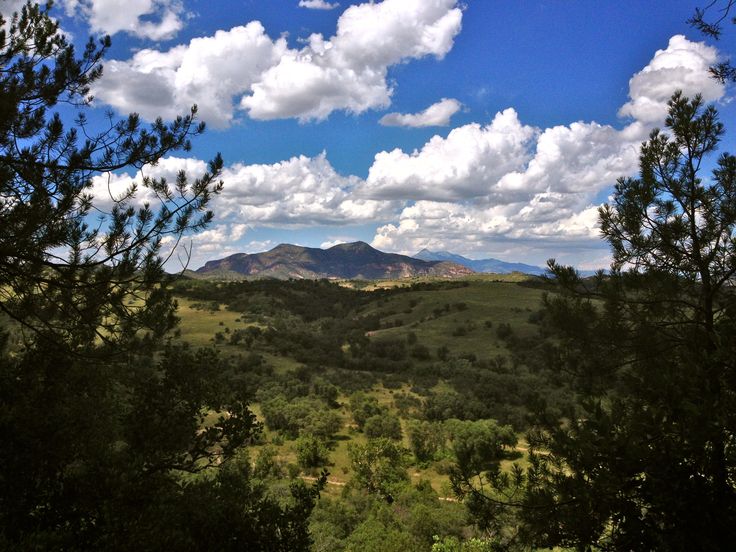
One site of Hermosa Mineral Drilling Proposal: Corral Canyon in the Patagonia Mountains.

Mar 4, 2014 | Blog
By Wendy Russell
The Patagonia Area Resource Alliance and Earthworks are working together to analyze AZ Mining Inc / Wildcat Silver’s Hermosa open pit mine plans so that our community can better understand its likely impacts. Earthworks is a national non-profit organization dedicated to protecting communities and the environment from the impacts of irresponsible mineral and energy development while seeking sustainable solutions. Earthworks stands for clean water, healthy communities and corporate accountability.
Here are some of the outcomes we can expect if the proposed Hermosa drilling project moves forward.
By reading reports that AZ Mining Inc / Wildcat Silver has recently released to investors which contain detailed information about its mining plans in the Patagonia Mountains, one can understand the purposes behind its current drilling exploration proposal of “drilling 24 geotechnical boreholes, 10 exploration boreholes and 12 hydrogeologic boreholes / monitoring wells, and excavating 16 test pits.” Spoiler alert: the sole purpose of the drilling proposal is to advance an open pit mine plan.
One purpose of the monitoring wells, as described in a January 2014 AZ Mining Inc /Wildcat Silver report, is to help “determine the quantity, location and pumping rates required to dewater the pit.” By the second year of mining,AZ Mining Inc / Wildcat Silver’s open pit would go below the water table, and water would be seeping into the pit. In order to mine,AZ Mining Inc / Wildcat Silver would have to continuously pump out this groundwater. The study says, “This creates a cone of depression around the pit allowing mining to take place.” What the report does not say is that this “cone of depression” will lower groundwater levels of the broader landscape. A rough calculation of groundwater pumping required by the mine would be 670 million gallons of water annually. To put this in perspective, the groundwater level for the town of Patagonia has already dropped nearly 18 feet since 2008, and the town uses approximately 42 million gallons per year. Wildcat’s mining would require 15 times that amount.
The geotechnical exploration that is slated to occur primarily in Corral Canyon and Goldbaum Canyon is also for AZ Mining Inc / Wildcat Silver’s open pit mine plans. Corral Canyon is described in AZ Mining Inc /Wildcat Silver’s report as “an optimal location for siting the TSF [Tailings Storage Facility]. Tailings typically contain dangerous chemicals, including arsenic, lead, mercury, and processing chemicals like acids and cyanide. AZ Mining Inc / Wildcat Silver notes that Corral Canyon is “at the top of the watershed.” It is also the top of the Patagonia Municipal Supply Watershed, the sole source of drinking water for the town of Patagonia and an additional 300 area wells.

Corral Canyon in the Patagonia Mountains, proposed site for AZ Mining Inc / Wildcat Silver’s mine tailings piles.
AZ Mining Inc /
Goldbaum Canyon is the planned location for AZ Mining Inc / Wildcat Silver’s Waste Rock Storage Facility. Waste rock is rock that does not contain desired minerals. It often contains iron, which can transform to produce acid run-off when exposed to air and water. This phenomenon is known as acid drainage. Acid drainage is irreversible and is already an ongoing issue from historic mines in the Patagonia Mountains.
The 10 exploration holes proposed in the current drilling plan, whose purpose is to prove the extent of the silver deposits, are essentially the same exploration holes AZ Mining Inc / Wildcat Silver proposed in 2011 but withdrew when PARA, Defenders of Wildlife, and Sky Island Alliance sued the Forest Service over its approval of Wildcat’s plans.
Advancing an Open Pit Mine
By reading AZ Mining Inc / Wildcat Silver’s reports to investors, it becomes clear that the only purpose of the Hermosa drilling proposal is to further develop an open pit mine plan. It is most certainly not a water study done for the benefit of the Town of Patagonia–a concocted assertion put forward by supporters of the mine. A peer-reviewed study of AZ Mining Inc / Wildcat Silver’s mine plan being prepared by PARA and Earthworks will provide the facts and detailed information on anticipated risks to our groundwater, the potential for acid drainage contamination, and heavy metals pollution, as well as the range of issues associated with air pollution, light and noise pollution.
Feb 10, 2014 | Blog
By Wendy Russell
News on the Patagonia mining exploration proposals and more happenings in the Coronado National Forest.
Appeal Process for FS Decision On Regal Resources Expected to Begin
In January, the Forest Service (FS) was slated to issue a Categorical Exclusion (CE) decision for Regal’s exploratory mineral drilling proposal in Humboldt Canyon in the Patagonia Mountains. This would indicate that the FS considers their proposal to be “without significant environmental impacts.”
In the past, a CE decision would allow a company to proceed with their proposed project immediately. However, the FS now offers an administrative appeal process for projects given a CE Decision. Anyone who commented on Regal’s Sunnyside proposal during the initial scoping comment period is entitled to participate in the appeal process. Once the decision is issued, the FS will publish a notice in the Nogales International newspaper, which starts a 45-day window within which to file an appeal to the FS.
PARA plans to assist folks in submitting objections during the appeal process. We will post the workshop date in our Newsletter, Events Calendar, and on our social media sites. Jenny Neeley, former Conservation Policy Director & Legal Counsel for Sky Island Alliance, will be leading that workshop.
In an update from Coronado National Forest Sierra Vista District Ranger Mark Ruggiero, there’s been a delay in issuing the CE Decision for Regal Resources because the mining company is supposedly experiencing financial difficulties.
Release of Wildcat’s Draft EA Anticipated
In another ongoing NEPA process in the Patagonia Mountains, the release of a Draft Environmental Assessment for AZ Mining Inc / Wildcat Silver’s Hermosa exploration proposal is also anticipated. The National Environmental Policy Act (NEPA) requires a “detailed statement” on the impacts of any proposed action that may “significantly affect the quality of the human environment.” Projects with anticipated environmental impacts get classified by NEPA as either requiring an “Environmental Assessment” or an “Environmental Impact Statement.” An Environmental Assessment (EA) is a brief analysis used to determine the significance of impacts resulting from a proposal. The EA is first released in draft form for public review and comment.
Coronado National Forest Sierra Vista District Ranger Mark Ruggiero issued a letter on December 18, 2013, announcing the anticipated Draft Environmental Assessment for the AZ Mining Inc (Wildcat Silver / Arizona Minerals) Hermosa Plan. Its release will trigger a 30-day public comment period before a final decision is issued. The letter also reported that in response to numerous comments received during the first scoping period, revision was made to the Hermosa Plan of Operation (Plan) “in order to reduce identified conflicts as to cultural resources.” The revised Plan is available on the Hermosa Drilling Project page on the Forest Service website: www.fs.fed.us/nepa/nepa _project_exp.php?project =41158. The changes are summarized in Appendix G.
If you have further questions about the Hermosa Plan, contact Margie B. DeRose, Geologist/Hermosa Project Manager, Coronado National Forest at (520) 388-8341 or mbderose@fs.fed.us.
Tell the Coronado National Forest that a full Environmental Impact Statement (EIS) is necessary when considering AZ Mining Inc (Wildcat Silver / Arizona Minerals) proposed Hermosa mineral drilling exploration project. Sign Petition here!
PARA is mobilizing community members to respond to the Hermosa Draft EA comment period. We will post the workshop date in our newsletter, Events Calendar, and on our social media sites. Jenny Neeley, former Conservation Policy Director & Legal Counsel for Sky Island Alliance, will be leading the workshop.
Objection Period for Rosemont FEIS Ends February 14
The Forest Service has released the Final Environmental Impact Statement (FEIS) for the proposed Rosemont Copper Mine Plan. In a new procedure for the Forest Service, an objection period is now available on the FEIS only for those parties who previously submitted scoping comments on Rosemont. The objection period started January 1 and is scheduled to end February 14.
Objections, including attachments, must be filed via mail, fax, email, hand-delivery, express delivery, or messenger service (Monday through Friday, 8:00 a.m. to 4:30 p.m., excluding holidays). Send to: Reviewing Officer, Southwest Region, 333 Broadway SE, Albuquerque, NM. 87102; by FAX to (520) 842-3173 or email to objections-southwestern-regional-office@fs.fed.us. For more information, contact Mindy Sue Vogel, Coronado National Forest, 300 W. Congress, Tucson, AZ, 520.388.8327, msvogel@fs.fed.us
Rosemont is now proposing a high volume of traffic through Patagonia. Rosemont’s FEIS now has added delivery routes for copper concentrate to Guaymas, Mexico. Highway 82 from Sonoita to Nogales is slated to be one of the delivery routes of copper concentrates from the proposed Rosemont mine. Trucks could be expected to make up to 56 round trips per day through Patagonia.
New Forest Management Plan in the Works
The Coronado National Forest (CNF) has prepared a Draft Land and Resource Management Plan, to update the current management plan, which was written in 1986. The public review period has already started, with deadline to comment on February 20, 2014.
UPDATE: The Forest Service has announced an extension of the public comment period. It has been extended an additional 14 days ending on March 6, 2014.
The Draft Forest Plan can be found on the Forest Service website: www.fs.usda.gov/detail/coronado/landmanagement/planning/?cid=fswdev7_018673. If you have questions or would like more information, please call the CNF office at 520-388-8300. Tell the receptionist you want to speak to someone about Plan Revision. You will be connected with one of the Plan Revision Core Team member.
Comments can be submitted via: Coronado Forest Plan Revision P.O. Box 1919 Sacramento, CA 95812, by fax (916) 456-6724 (Subject: Coronado National Forest, Plan Revision); or by email to CoronadoNF@fscom-ments.org (Subject: Coronado National Forest, Plan Revision).
Area conservation organizations have formed working partnerships in order to effect management recommendations to the new Forest Plan. The Coronado Planning Partnership (CPP) formed in 2006 in response to the Coronado National Forest initiating revision of its Forest Plan. The Partnership includes nearly 40 groups and landowners devoted to influencing and overseeing the new Forest Plan. Their mission includes promoting “the protection of wild species, their habitats, and ecological communities, as well as the processes that sustain them, on the Coronado National Forest.” The Partnership has released a report, State of the Coronado National Forest: An Assessment and Recommendations for the 21st Century, that they encourage the public to use to formulate their own comments on the Draft Forest Plan. It can be found on their website: www.skyislandaction.org/state_of_coronado.html.
CPP member, the Arizona Wilderness Coalition, is holding two meeting to encourage folks to comment on the Draft Forest Plan on February 6, 5-7pm, at the Martha Cooper Library 1337 N. Catalina Ave, Tucson and February 13, 6-8pm, at REI 160 W Wetmore Road, Tucson. Please check the CPP website for additional information: www.skyislandaction.org/cpp.html
Aug 6, 2013 | Blog
By Wendy Russell
The Forest Service has re-opened the public comment period for the Regal Resources Sunnyside mining exploration project in Humboldt Canyon. This is the same project that had an earlier scoping period back in November 2011. According to the scoping notice from the Coronado National Forest, Sierra Vista District Ranger Mark Ruggiero has “decided to offer another scoping period in conjunction with this formal comment period to ensure that public involvement is current and comprehensive.”
Regal Resources Inc. is a junior mining company based in Canada. Its property in the Patagonia Mountains consists of 295 claims on the Coronado National Forest totaling approximately 5,900 acres. The scoping notice states that the Sunnyside mining exploration project is for 6 exploratory drilling sites to collect core samples to assess potential copper mineralization in Humboldt Canyon. The operation would run 24 hours a day, 7 days a week. Water would be hauled in and access for the project would be from the town of Patagonia by way of Harshaw Road, aka National Forest System Roads 49 and 58. Access within the project area would be via NFSR 812 and 4685.
According to the scoping notice, “if you submitted comments in 2011 regarding the Sunnyside project, you MUST advise us [Forest Service] in writing that you would like your previous comments to be considered as responsive to the legal notice for eligibility to appeal the decision: you do not have to resubmit your comments.” If you did not receive the scoping notice and would like to receive that information from the Forest Service contact Patrick Morton, FS Geologist, at (520)388-8348 or pmorton@fs.fed.us.
Link to Scoping Notice for Sunnyside mining project
Link to Sunnyside project map
Link to Sunnyside Plan of Operation
Link to USFS project page for Regal Resource’s Sunnyside project in Humboldt Canyon.
The Patagonia Area Resource Alliance co-hosted a comment writing workshop with Sky Island Alliance on Thursday, August 1 at 6:30 PM in Cady Hall to assist folks who want to comment on the Sunnyside project. It is our only opportunity to get the Forest Service to examine all aspects of this mining exploration project that may concern us as local citizens who live and enjoy recreation around the Patagonia Mountains. Remember, you’re only eligible to challenge the decision rendered by the Forest Service regarding this exploratory drilling project if you submit a comment within the 30-day comment period. The estimated deadline for comments is August 10, 2013.
We will be posting comment suggestions and a template from that workshop.
If you wish to submit a comment:
Please include the project name (Sunnyside Project) in the subject line of your response and/or email.
Comments may be submitted as follows:
Email: comments-southwestern-coronado@fs.fed.us
Facsimile: 520-388-8305, ATTN: Patrick Morton
U.S. Mail: Coronado National Forest, ATTN: Patrick Morton, 300 W. Congress St., Tucson, AZ 85701
Hand-delivery: 6th floor, 300 W. Congress St., Tucson, AZ 85701
Monday through Friday, 8 a.m. to 4:30 p.m., excluding Federal holidays
Also note: the Wildcat Silver Hermosa mining exploration project opened its public comment period in early August.
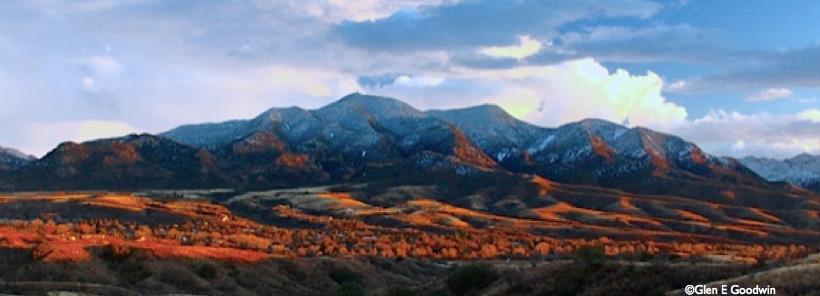
Feb 9, 2013 | Blog
The Patagonia community, PARA and SIA are gearing up to make a difference!
Visit the small town of Patagonia near Arizona’s southern border and the first thing you’ll notice is Red Mountain, the most prominent peak of the Patagonia Mountain range. Red Mountain and the rest of the mountain range contain an amazing array of native plant and wildlife species and even more extraordinary landscapes. There’s more biodiversity here than in Yellowstone National Park! The town of Patagonia, nestled at the base of the mountains, is the perfect launching off point for a wide variety of outdoor recreational activities including hiking the Arizona Trail, mountain biking, and world-class bird-watching. The community relies on this eco-tourism as well as the tourists that come to town just to enjoy our locally-owned restaurants, galleries and shops.

Unfortunately, our community and our mountains are immediately threatened by several hard rock mining proposals that would have severe and permanent impacts to this important Sky Island mountain range and the town of Patagonia. The mining claims encompass most of the Patagonia Mountains, including Red Mountain and the Arizona Trail. They even go right up to the southern edge of town. These mining proposals would destroy valuable wildlife habitat and would cut critical wildlife migration corridors. The mining activities would use vast quantities of water. We fear that they would lower the water table, reduce the water available to the town and even dry up private wells resulting in dire impacts to the vegetation, wildlife and townspeople.
In response to these threats, the Patagonia Area Resource Alliance and the community of Patagonia is working with Sky Island Alliance to advocate for the watersheds and natural and cultural resources of the Patagonia Mountains. Through a grant awarded from the Patagonia® Clothing Company, PARA and SIA are organizing training workshops to encourage Patagonia area residents to identify and collect information that highlights the extraordinary biological richness of our mountains. We will use that information to effectively advocate for the protection of this cherished mountain range.
SIA is lending us its expertise in many ways, including training Patagonia-area volunteers to play a key role in inventorying and documenting mammals, birds, bats, plants and more. SIA and PARA will also team with regional experts and other partners to conduct springs assessments, unobtrusive wildlife monitoring, and road inventories for a better understanding of our area’s resources. To utilize this information as effectively as possible, PARA will work closely with SIA throughout this project to launch a community-engaged and science-based advocacy campaign. This campaign will empower and build capacity within our community to promote the protection of the Patagonia area and halt current mining proposals.
These efforts will enable the community to effectively respond to the numerous exploratory drilling and mining proposals slated for this fragile area. It will also ensure that we are well-positioned to repel any future proposals by promoting the protection of this special place and the plants, animals and people who call Patagonia home.
The Patagonia community, PARA and SIA are gearing up to make a difference! With support from Patagonia® Inc, we will protect and preserve our exceptional Patagonia Mountains, the home to diverse wildlife and plant species, extraordinary landscapes and our community of amazing people.




 Patagonia – The Hermosa silver mine proposed inside Patagonia, Arizona’s Municipal Supply Watershed could deplete the town’s drinking water and perpetually contaminate area groundwater with acid mine drainage, according to a new peer-reviewed report.
Patagonia – The Hermosa silver mine proposed inside Patagonia, Arizona’s Municipal Supply Watershed could deplete the town’s drinking water and perpetually contaminate area groundwater with acid mine drainage, according to a new peer-reviewed report.

 Jenny Neeley reprised her role as our National Environmental Policy Act (NEPA) expert for tips on filing public comments on the Hermosa draft Environmental Assessment (EA) released by the Coronado National Forest. The purpose of an Environmental Assessment is to determine whether the impacts of a project will be significant. The goal for our comments on the draft EA is to demonstrate that the Hermosa project impacts will be significant so that the Forest Service conducts a more detailed and comprehensive Environmental Impact Statement.
Jenny Neeley reprised her role as our National Environmental Policy Act (NEPA) expert for tips on filing public comments on the Hermosa draft Environmental Assessment (EA) released by the Coronado National Forest. The purpose of an Environmental Assessment is to determine whether the impacts of a project will be significant. The goal for our comments on the draft EA is to demonstrate that the Hermosa project impacts will be significant so that the Forest Service conducts a more detailed and comprehensive Environmental Impact Statement. 







